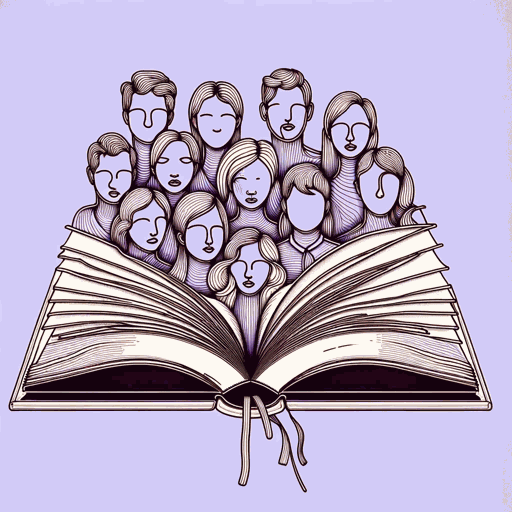65 pages • 2 hours read
Winona Guo, Priya VulchiTell Me Who You Are: Sharing Our Stories of Race, Culture, & Identity
Nonfiction | Book | Adult | Published in 2021A modern alternative to SparkNotes and CliffsNotes, SuperSummary offers high-quality Study Guides with detailed chapter summaries and analysis of major themes, characters, and more.
Important Quotes
Content Warning: This section contains discussion of slavery, police brutality lynching, segregation, and racism.
“We asked everyone, How has race, culture, or intersectionality impacted your life? The responses were astonishing. These identities had so significantly shaped the lives of the people we spoke to that it often felt as if we had asked them simply, Tell me who you are.”
(Introduction, Pages 3-4)
Referring to both the title of the book and the Epigraph, the authors describe their methodology: simply asking people around the US about the impact of race, culture, or intersectionality on their lives. They argue that the results revealed that these identities are at the core of a person; asking someone about their race, culture, and identity therefore facilitates understanding of who they really are. The idea that race and culture impact people’s daily lives in a way that cannot be simply bracketed off is core to the idea that Identity Is Intersectional.
“Looking around at both ourselves and others, we realized that, as much as we all like to believe we are open-minded and progressive, many of us have not truly broken out of our racially divided bubbles. We have not learned from and formed friendships across the true diversity of our nation. We have remained too aloof from the pursuit of justice.”
(Introduction, Page 7)
The authors argue that many people believe themselves to be open-minded while actually living in “bubbles,” separated from people of other races. This leads to lack of understanding of people of other races and even to ignorance of one’s own ignorance, which in turn contributes to social injustice. By acknowledging their own preconceptions, the writers encourage readers to do the same.
“Thus, Whiteness and Blackness were born: ‘twins birthed from the same womb, that of slavery.’ The White race began to be formed ‘out of a heterogenous and motley collection of Europeans who had never before perceived that they had anything in common.’ Whiteness remains the dominant category today—other races are compared and contrasted relative to it. Whiteness positions itself against ideas of, among others, Blackness, Indigenousness, Asianness, and Hispanic-ness. This is why people of color, rather than White people, will frequently be identified by their race. Whiteness has become the norm.”
(Introduction, Page 9)
This quote is part of “A Brief History of Whiteness,” an introductory section just before Chapter 1. The authors quote Racial Domination, Racial Progress by Matthew Desmond and Mustafa Emirbayer to describe how the concept of Blackness came from slavery.

